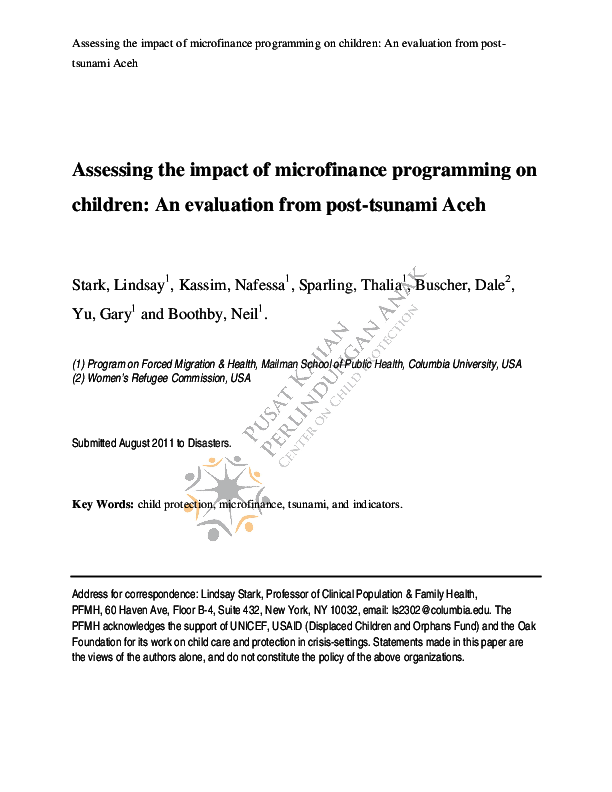
Study: Evaluations
Assessing the impact of microfinance programming on children: An evaluation from post-tsunami Aceh
Publication year:
2011
English
Format:
Publisher:
Columbia University,Women's Refugee Commission
The tsunami on December 24th, 2004 devastated the region of Aceh, Indonesia. This article presents an evaluation of the long-term impact of microfinance programs on Acehnese children organized by Save the Children as part of the post tsunami economic recovery effort. The intervention group for the evaluation consisted of 185 microfinance participants, and the comparison group consisted of 192 individuals who did not participate in microfinance programs. All study participants were interviewed through a structured survey instrument, and 155 participants were re-interviewed as part of a sub-study to validate the initial survey results. The study utilized four child protection indicators: diet, health, childcare, and education in contrast to traditional repayment rate indicators. The primary results were insignificant with respect to all four-child protection indicators, suggesting that with respect to these indicators, there was little to no long-term difference between the impact of microfinance on beneficiaries’ children and non-beneficiaries’ children. These findings signify a need for microfinance actors to move beyond traditional indicators of economic success to evaluate the social changes microfinance programs are presumed to effect.
Read full abstract
Authors
View & Download
Document information
Format
Content type
Country
Region
Rights
© Author/Publisher
Found a mistake? Help us improve!
If you have noticed a document assigned to the wrong author or any other inaccuracies, let us know! Your feedback helps us keep our data accurate and useful for everyone.
Share
Link
